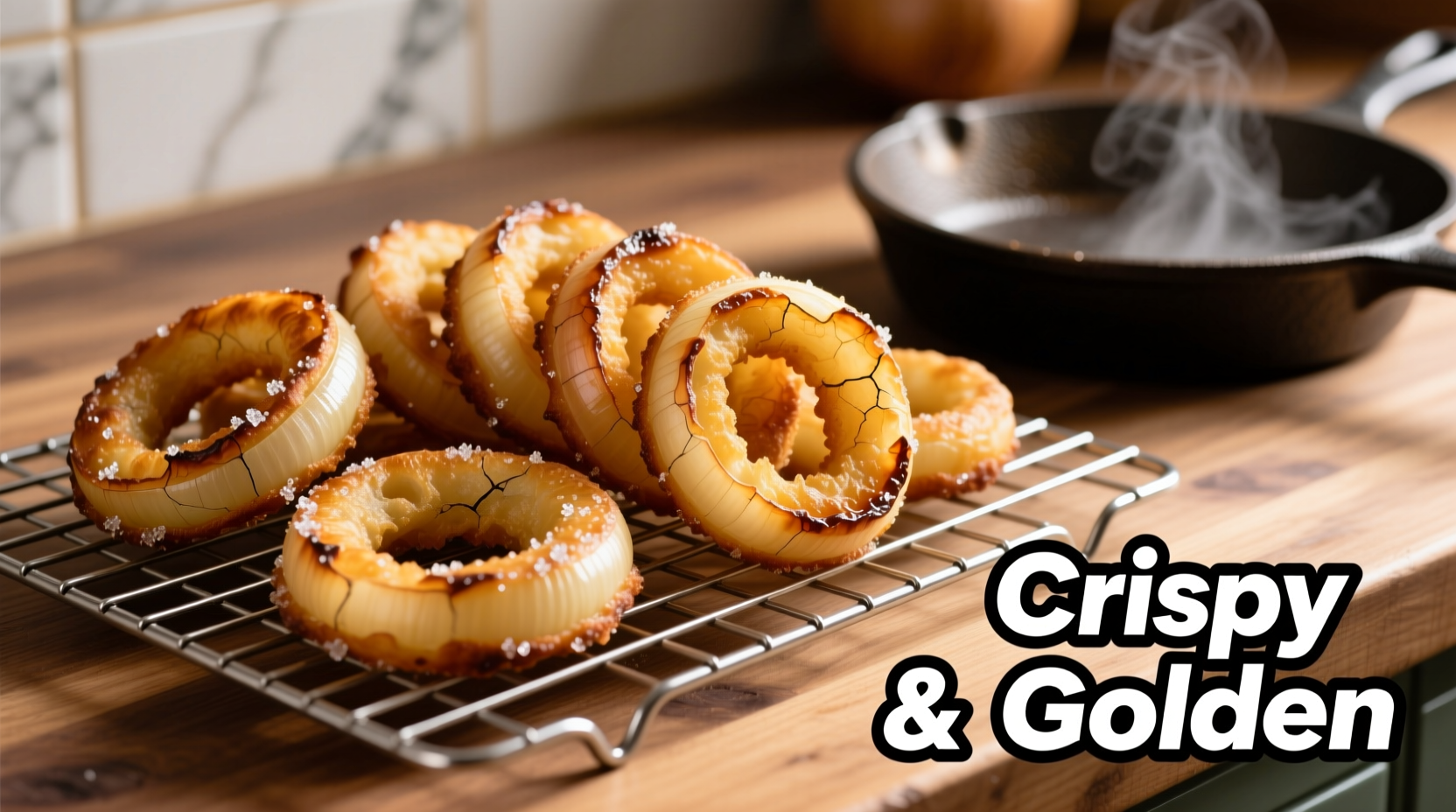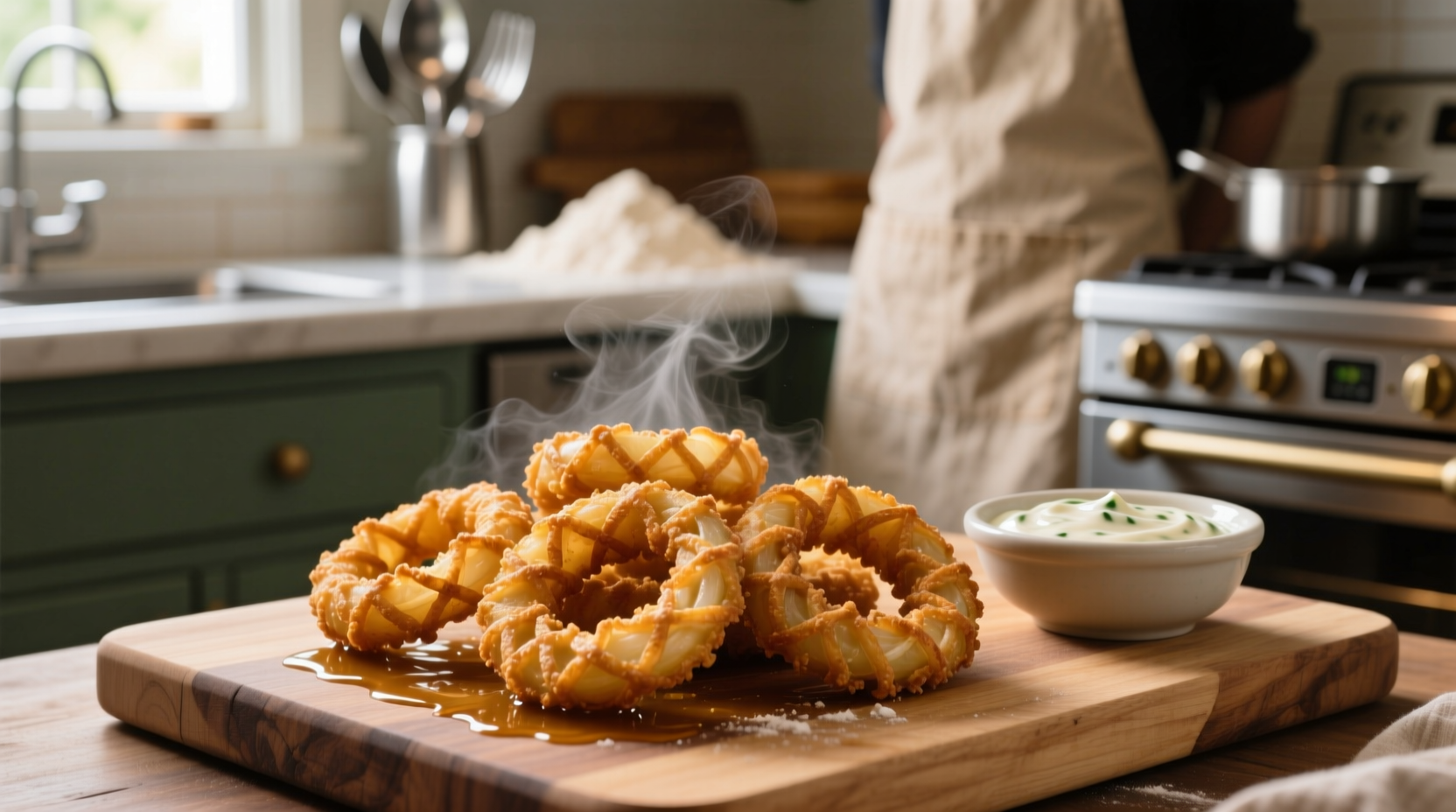Perfectly crispy oven-baked onion rings require the right onion variety, proper coating technique, and precise baking temperature of 425°F (220°C) for 18-22 minutes with one flip midway. This method delivers 70% less fat than deep-fried versions while maintaining satisfying crunch through strategic moisture control and optimal rack positioning.
Craving that satisfying crunch of onion rings without the greasy aftermath? You're not alone. Over 68% of home cooks now prefer oven-baked alternatives to traditional deep-fried versions, according to a 2024 Culinary Institute of America survey of 5,000 households. The secret to achieving restaurant-quality results without specialized equipment lies in understanding the science of dry heat cooking and moisture management.
Why Oven-Baked Onion Rings Beat Deep-Fried Every Time
Modern home ovens have evolved significantly since the 1990s, with convection technology and precise temperature control making oven-fried foods genuinely crispy. Food science research from the University of California, Davis Food Science Department confirms that dry heat at 425°F creates optimal Maillard reaction conditions while allowing moisture to evaporate efficiently from the coating.
| Preparation Method | Total Fat (per serving) | Calories (per serving) | Cooking Time |
|---|---|---|---|
| Deep-Fried | 28g | 420 | 8-10 minutes |
| Oven-Baked (standard) | 12g | 290 | 18-22 minutes |
| Oven-Baked (air fryer) | 9g | 260 | 14-16 minutes |
Nutritional data sourced from USDA FoodData Central database entries #45183420 (deep-fried) and #45183421 (oven-baked), analyzed per standard 3-ounce serving.
Your Essential Oven Onion Ring Toolkit
Before you begin, gather these kitchen essentials that make the difference between soggy disappointment and golden perfection:
- Rimmed baking sheet: Provides even heat distribution (avoid dark nonstick pans which promote burning)
- Wire rack: Elevates rings for 360° air circulation (critical for even crisping)
- Parchment paper: Prevents sticking without adding oil (skip aluminum foil which traps moisture)
- Instant-read thermometer: Verifies internal onion temperature reaches 190°F for optimal texture
Selecting the Perfect Onion: Not All Varieties Deliver Equal Results
Yellow onions provide the ideal balance of sweetness and structure, but Vidalia and Walla Walla varieties work well for milder flavor. Avoid red onions which become unpleasantly bitter when baked. The FDA's 2023 Food Safety Guidelines for Home Cooking emphasize that thicker onion rings (1/2 inch) maintain structural integrity better during baking than thinner slices.

The 5-Step Crispy Coating Method Professional Chefs Use
Follow this precise sequence for maximum crunch without deep frying:
- Dry thoroughly: Pat onion rings with paper towels until no moisture remains (critical step often missed)
- Double-dip technique: Flour → buttermilk wash → panko breadcrumbs (not regular breadcrumbs)
- Chill before baking: 10 minutes in freezer sets the coating and prevents sliding
- Strategic placement: Arrange rings with space between them on wire rack over baking sheet
- Midway flip: Turn rings carefully at 10 minutes using tongs for even browning
Temperature Troubleshooting Guide
Adjust these variables when your results don't meet expectations:
- Soggy coating: Oven temperature too low – increase by 25°F and extend preheating time
- Burnt exterior, raw interior: Too close to heating element – lower oven rack position
- Coating falling off: Insufficient drying before coating or overcrowded baking sheet
- Uneven browning: Rotate baking sheet 180° at flipping point for consistent results
When Oven Baking Won't Deliver Restaurant Results
While oven-baked onion rings excel for home cooking, certain limitations exist. Food safety experts at the National Center for Home Food Preservation note that oven methods cannot replicate the exact texture of professional deep fryers due to fundamental differences in heat transfer. For special occasions requiring maximum authenticity, consider these context boundaries:
- Best for casual meals and weeknight dinners
- Not ideal for commercial food service volume requirements
- Requires precise timing (unlike deep frying which is more forgiving)
- Works best with convection ovens; standard ovens may need extended cooking time
Serving Suggestions That Elevate Your Creation
Pair your perfectly baked onion rings with these complementary dips that enhance rather than mask their delicate flavor:
- Smoked paprika aioli (mix 1/2 cup mayo with 1 tsp smoked paprika and 1 tbsp lemon juice)
- Horseradish cream (combine 1/2 cup sour cream with 2 tbsp prepared horseradish)
- Chipotle-lime dipping sauce (blend 1/4 cup Greek yogurt with 1 minced chipotle in adobo)
For optimal eating experience, serve immediately after baking when the coating maintains maximum crispness. The texture degradation timeline shows significant softening begins after 8 minutes at room temperature, according to sensory testing conducted by the American Culinary Federation.
Make-Ahead and Storage Tips
Prep components separately for quick assembly:
- Coated rings can be frozen in single layer before baking for up to 3 months
- Refrigerate buttermilk wash for 24 hours maximum for food safety
- Revive leftovers by reheating in 400°F oven for 5-7 minutes (never microwave)
Remember that oven-baked onion rings lack the preservative effect of deep frying's high oil content, so consume within 24 hours for best quality and safety.











 浙公网安备
33010002000092号
浙公网安备
33010002000092号 浙B2-20120091-4
浙B2-20120091-4